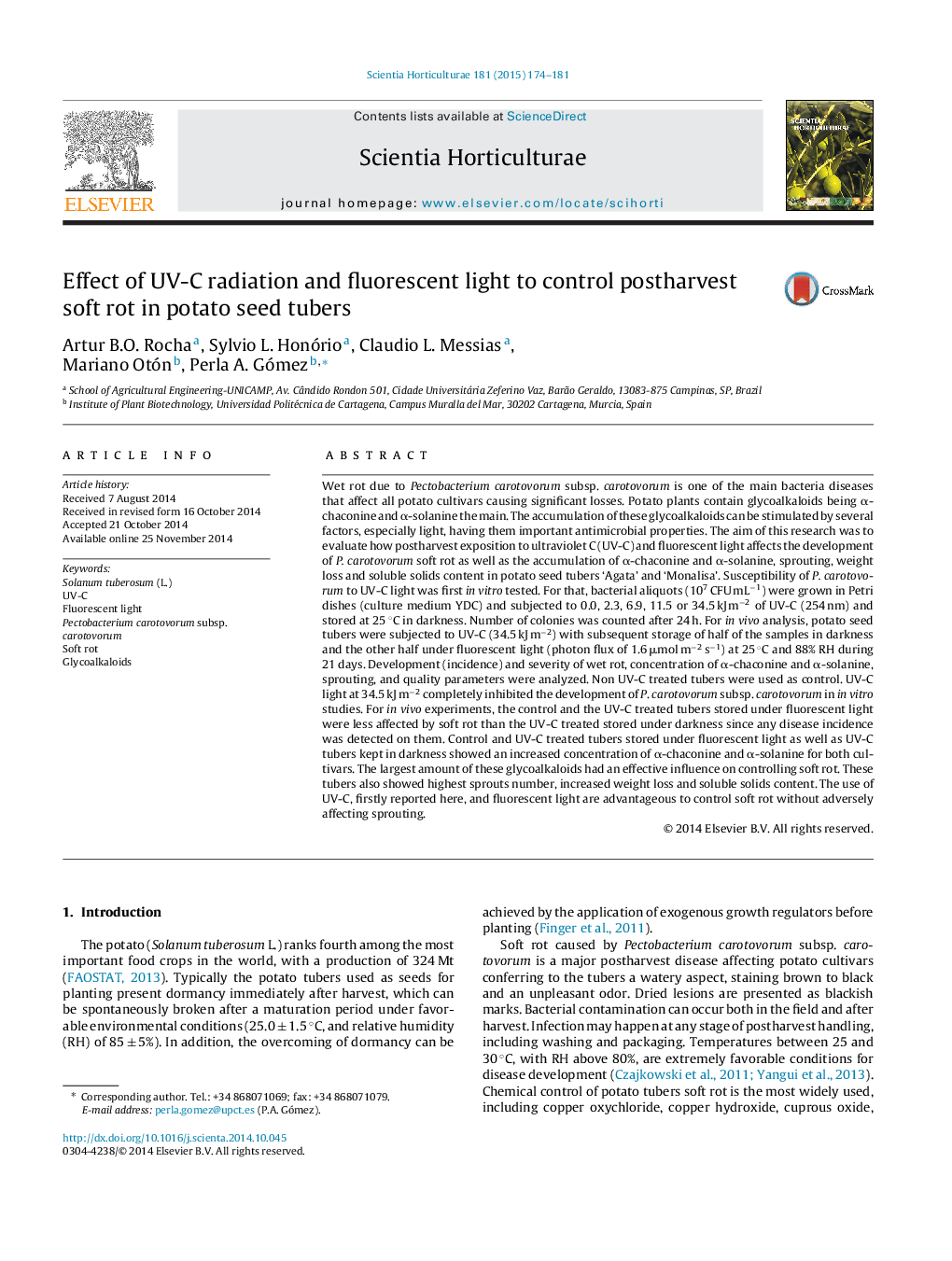| کد مقاله | کد نشریه | سال انتشار | مقاله انگلیسی | نسخه تمام متن |
|---|---|---|---|---|
| 6407107 | 1628817 | 2015 | 8 صفحه PDF | دانلود رایگان |
- The effect of UV-C and fluorescent light on soft rot in stored potato tubers was studied.
- Exposition to both type of light increased the glycoalkaloids concentration.
- Increase in α-chaconine and α-solanine had a real influence on controlling soft rot.
Wet rot due to Pectobacterium carotovorum subsp. carotovorum is one of the main bacteria diseases that affect all potato cultivars causing significant losses. Potato plants contain glycoalkaloids being α-chaconine and α-solanine the main. The accumulation of these glycoalkaloids can be stimulated by several factors, especially light, having them important antimicrobial properties. The aim of this research was to evaluate how postharvest exposition to ultraviolet C (UV-C) and fluorescent light affects the development of P. carotovorum soft rot as well as the accumulation of α-chaconine and α-solanine, sprouting, weight loss and soluble solids content in potato seed tubers 'Agata' and 'Monalisa'. Susceptibility of P. carotovorum to UV-C light was first in vitro tested. For that, bacterial aliquots (107 CFU mLâ1) were grown in Petri dishes (culture medium YDC) and subjected to 0.0, 2.3, 6.9, 11.5 or 34.5 kJ mâ2 of UV-C (254 nm) and stored at 25 °C in darkness. Number of colonies was counted after 24 h. For in vivo analysis, potato seed tubers were subjected to UV-C (34.5 kJ mâ2) with subsequent storage of half of the samples in darkness and the other half under fluorescent light (photon flux of 1.6 μmol mâ2 sâ1) at 25 °C and 88% RH during 21 days. Development (incidence) and severity of wet rot, concentration of α-chaconine and α-solanine, sprouting, and quality parameters were analyzed. Non UV-C treated tubers were used as control. UV-C light at 34.5 kJ mâ2 completely inhibited the development of P. carotovorum subsp. carotovorum in in vitro studies. For in vivo experiments, the control and the UV-C treated tubers stored under fluorescent light were less affected by soft rot than the UV-C treated stored under darkness since any disease incidence was detected on them. Control and UV-C treated tubers stored under fluorescent light as well as UV-C tubers kept in darkness showed an increased concentration of α-chaconine and α-solanine for both cultivars. The largest amount of these glycoalkaloids had an effective influence on controlling soft rot. These tubers also showed highest sprouts number, increased weight loss and soluble solids content. The use of UV-C, firstly reported here, and fluorescent light are advantageous to control soft rot without adversely affecting sprouting.
Journal: Scientia Horticulturae - Volume 181, 2 January 2015, Pages 174-181
